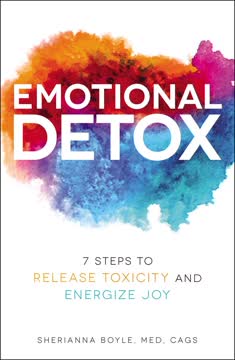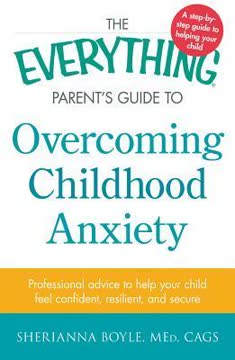Key Takeaways
1. Emotions are Nutrients, Reactivity is Toxin: Embrace Feelings, Not Reactions
Raw emotions are like nutrients, reactivity like toxins.
Emotions vs. Reactions. The core message is distinguishing between raw emotions and learned reactions. Emotions themselves are not toxic; they are natural and necessary, like nutrients for the soul. Reactivity, on the other hand, is the learned response to those emotions, often involving denial, expectations, guilt, doubt, and insecurity.
Conditioned Responses. We are not born with reactivity; it is a learned behavior. Raw emotions provide energy and insight when fully processed, but reactivity creates toxins and inflammation in the mind and body, diminishing well-being. The goal is to cleanse reactivity and become present to emotional energy, courageously connecting to one's true purpose: joy.
Embracing Emotions. The key is to embrace all emotions, not just the happy ones. Undermining, numbing, or pushing them away only delays their benefits. An emotional detox is about flushing out high levels of stress, worry, and defensiveness, allowing emotions to be fully digested and integrated.
2. Emotional Detox: Purifying Overprocessed Emotions, Returning to Joy
Emotional detoxes are a systematic and mindful practice for purifying undigested and overprocessed emotions, freeing us from the illusion that we are separate from love.
Systematic Purification. Emotional detoxes are presented as a structured approach to purifying emotions that have been overprocessed or undigested. This process is not about physical cleansing but about spiritual and emotional purification, freeing individuals from the illusion of separation from love and returning them to their natural state of joy.
Analogy to Food Detox. Just as a food detox removes unwanted impurities from the body, an emotional detox removes unwanted emotional impurities. Overprocessed emotions, like overprocessed foods, deplete energy and create an unnatural state. The goal is to process emotions properly, bringing individuals closer to love.
Reaction Cleanse. Instead of a juice cleanse, think of an emotional detox as a reaction cleanse, where you flush out high levels of stress, worry, and defensiveness. This involves learning how to process emotions through a detox, which brings you closer to love and helps you rewrite negative stories, thoughts, and beliefs attached to your emotions.
3. Manifesting Begins with Healing: The C.L.E.A.N.S.E. Formula
Seeds cannot be nourished with toxic water.
Healing First. The C.L.E.A.N.S.E. formula is presented as a method for both emotional detox and manifesting desires. The key is that manifesting is a process that begins with healing. Seeds cannot be nourished with toxic water, so reactivity must be dissolved first, and whole emotions embraced.
The Formula's Power. The purity of these emotions feeds dreams. The formula integrates the spiritual law of attraction, focusing on what expands through processing emotions. It helps heal traumas and childhood wounds, diminishing triggers and supporting the flow of energy.
Manifesting Process. The manifesting process evolves into surrender and slowly emerges into connection and ease. The C.L.E.A.N.S.E. formula provides insights and hope, giving individuals the means to process what is triggering them and creating a brighter light for their higher purpose.
4. Simplicity Through Emotions: Fear or Love
Seeing things as either a state of love or fear takes all the guesswork away.
Two States. Emotional detoxes keep things simple by categorizing emotions as either fear or love. This approach removes the need to dissect, diminish, devalue, or criticize feelings. If you feel open, neutral, and present in your body, you are coming from love, which brings joy.
Heart vs. Mind. The distinction between heart and mind is crucial. Rushing through emotions by thinking and talking instead of feeling can lead to emotional reactivity. Triggers without consciousness can lead down a pathway of emotional reactivity, making bodies feel unsafe.
Benefits of Simplicity. Seeing things as either love or fear takes away the guesswork. There is no need to figure things out, analyze, or worry about doing it wrong. This state puts a smile on your face even if your day has been lousy, making the healing process more accessible and less overwhelming.
5. Surrender, Don't Just Let Go: Allowing What Is, Not Pushing Away
Surrender means we are allowing what is coming up to be healed.
Surrender vs. Letting Go. The book emphasizes the importance of surrender over simply letting go. Letting go focuses on releasing the past, while surrender tunes into the present moment. Surrender carries compassion and allows what is coming up to be healed, focusing on the release rather than the trigger.
Natural State. Surrender is presented as a natural state, while letting go is not. Focusing on letting go can increase anxiety, take energy, and manage emotions. Surrender, on the other hand, promotes calming, cultivates energy, and processes emotions.
Compassion and Healing. Surrender carries compassion and allows what is coming up to be healed. It is the soul guiding you to your most natural state of surrender, rather than focusing on the trigger. This approach supports the emotional detox by focusing on the healing process.
6. The Body is the Unconscious Mind: Emotions Stored in Body Parts
The body is the unconscious mind!
Mind-Body Connection. The book highlights the profound connection between the mind and body, emphasizing that repressed trauma and overwhelming emotions can be stored in body parts. This storage can affect the ability to feel or move that part, underscoring the importance of emotional detox for physical well-being.
Physical Manifestations. Emotional detoxes can lead to improved health, relationships, and financial flow, as well as a balanced body and connection to a higher purpose. The C.L.E.A.N.S.E. steps teach how to let go, trust feelings, and embrace storms, processing emotions instead of swallowing them whole.
Yoga and Healing. Integrating the C.L.E.A.N.S.E. formula into activities like yoga or support groups can shift participants into healing mode, allowing them to walk away feeling lighter and stronger with less reactivity. This integration can lead to significant changes in the body.
7. Resistance is the Real Drain: Not the Emotion, But the Blockage
It is not the emotion that is causing your drain but the resistance to digesting it fully.
Resistance vs. Emotion. The book emphasizes that it is not the emotion itself that causes a drain on energy, but rather the resistance to digesting it fully. Resistance acts like a dam, preventing the flow of emotions and leading to overprocessing, trauma triggers, and disconnection.
Blame and Projection. One of the ways resistance manifests is through blame. When we blame our feelings or situation on someone or something, we project rather than digest the feelings. This projection is like vomit, not sitting well in the body.
Bodily Inflammation. Resistance often shows up through bodily inflammation, such as a pinched nerve, stiff neck, headache, or back strain. Noticing bodily tension is an important part of the emotional detox, as it signals the presence of resistance.
8. Disconnection: The Barrier to Joy and Love
Disconnection happens when you become detached from your emotions.
Detachment and Defense. Disconnection occurs when individuals become detached from their emotions, often as a way to protect themselves from potential threats. This detachment can lead to defensive behaviors, such as appearing like they don't care, giving up, giving in, or saying something they don't mean.
Social Isolation. Remaining detached can create social isolation, which further suppresses natural states of joy and love. The detox helps weaken these tendencies, replacing them with the healing power of connection.
Gut Feelings. Disconnection can happen gradually over time, with individuals ignoring their gut feelings and focusing on other things. The detox helps loosen these old ways of being, allowing for more moments of connection and a shift from defensiveness to bliss.
9. The Power of the Vagus Nerve: Calming the Fight-or-Flight Response
When you stimulate your vagus nerve, the relationship between your brain and body strengthens.
Vagus Nerve Stimulation. The book highlights the importance of stimulating the vagus nerve to calm the sympathetic (fight-or-flight) nervous system. The vagus nerve connects the brain stem to the abdomen, influencing organs such as the heart, lungs, liver, and kidneys.
Benefits of Stimulation. Higher vagal tone is associated with greater closeness to others and more altruistic behavior, while low vagal tone can contribute to disorders such as anxiety, intestinal problems, depression, and eating disorders. Stimulating the vagus nerve increases blood flow, helping the body relax and digest emotions.
Techniques for Stimulation. Techniques for stimulating the vagus nerve include exercise, singing loudly, yoga, prayer, splashing cold water on the face, deep diaphragmatic breathing, positive social interactions, meditation, and laughter. These practices help reset the nervous system and promote emotional well-being.
10. The Importance of the Inhale: Drawing in Safety and New Possibilities
Your inhale is what prepares you for a transition.
Inhale as Preparation. The book emphasizes the importance of the inhale as a way to prepare for transitions, both physical and emotional. Inhaling deeply provides energy, keeps individuals motivated and alert, and helps them take in oxygen, which burns fuel in the body.
Safety and Trust. As the body receives oxygen and releases carbon dioxide efficiently, it feels safe. This feeling of safety is essential for exploring and releasing deeper levels of trauma. The inhale helps individuals move from doing to becoming.
Overcoming Fear. By focusing on the inhale, individuals can overcome fear and create new possibilities. The inhale allows them to draw away layers of fear, anxiety, and grief, and to connect to their most natural state of being.
11. The Soul Knows Joy: Reconnecting to Your Authentic Self
No part of us knows joy better than the soul.
Soul's Connection to Joy. The book emphasizes that the soul inherently knows joy and that our spirits want to stay in sync with joy. However, joy can be stripped from life if we view it through a lens of fear. Compromised emotions lower our standards and create an environment in which we ignore things that disrupt joy.
Ignoring the Soul. If we feel disconnected, overworked, undervalued, or stuck, we are ignoring our soul's ability to nourish us. Our feelings have a purpose, and when they are sustaining and digested fully, they offer tremendous energy.
Authenticity and Bliss. The more we are able to be ourselves, the better things are. To be fully ourselves, we must process our emotions rather than think about them. This connection allows us to truly turn on our manifesting powers, and as this occurs, we find life flows with more joy, ease, and love.
Last updated:
FAQ
1. What is "Emotional Detox: 7 Steps to Release Toxicity and Energize Joy" by Sherianna Boyle about?
- Systematic Emotional Cleansing: The book introduces a mindful, step-by-step process for purging undigested and overprocessed emotions, aiming to restore readers to their natural state of joy.
- C.L.E.A.N.S.E. Formula: Central to the book is the seven-step C.L.E.A.N.S.E. method (Clear, Look Inward, Emit, Activate Joy, Nourish, Surrender, Ease) designed to guide readers through an emotional detox.
- Personal and Professional Insights: Sherianna Boyle shares her own healing journey, including her response to her husband’s affair, and integrates her experience as a psychologist and energy practitioner.
- Practical Tools and Techniques: The book offers actionable exercises, lifestyle tips, and self-care strategies to help readers process emotions, reduce reactivity, and manifest greater joy.
2. Why should I read "Emotional Detox" by Sherianna Boyle?
- Break Free from Emotional Patterns: The book is ideal for anyone feeling stuck, overwhelmed, or weighed down by past trauma, stress, or negative emotional habits.
- Accessible, Actionable Steps: Boyle’s C.L.E.A.N.S.E. formula is practical, easy to follow, and can be integrated into daily life for lasting change.
- Holistic Approach: The book combines psychological research, mind-body techniques, and spiritual wisdom, making it suitable for readers seeking a comprehensive approach to emotional well-being.
- Empowerment and Joy: Readers are encouraged to move beyond coping and managing emotions to truly healing and energizing their lives with joy and self-acceptance.
3. What are the key takeaways from "Emotional Detox" by Sherianna Boyle?
- Emotions vs. Reactivity: Emotions are natural and necessary; it’s our learned reactivity (overthinking, numbing, avoiding) that creates toxicity.
- Processing, Not Suppressing: True healing comes from digesting and experiencing emotions, not from pushing them away or overanalyzing them.
- Joy as a Natural State: Joy is our default state, and emotional detoxing helps us return to it by clearing the blocks created by reactivity.
- C.L.E.A.N.S.E. as a Lifestyle: The seven steps are not a one-time fix but a sustainable practice for ongoing emotional health and resilience.
4. What is the C.L.E.A.N.S.E. formula in "Emotional Detox" and how does it work?
- Clear: Begin by acknowledging and reducing reactivity, using techniques like body scans, breathwork, and vagus nerve stimulation.
- Look Inward: Shift from self-reflection (thinking) to self-awareness (feeling), using body dialoguing to notice sensations and bridge the gap between mind and body.
- Emit: Use sound, breath, and core engagement to release stored emotional energy, focusing on the lower chakras and the gut-brain connection.
- Activate Joy: Open the heart and third eye, attune to joy, and distinguish between wanting (lack) and having (abundance).
- Nourish: Cultivate appreciation, healthy communication, and forgiveness, nourishing relationships and self with positive energy.
- Surrender: Let emotions flow rather than trying to let go, surrendering to healing and self-acceptance, and offering your process to a higher power or Mother Earth.
- Ease: Integrate trust, boundaries, vulnerability, and self-care rituals to maintain emotional flow and prevent relapse into old patterns.
5. How does Sherianna Boyle define an "emotional detox" and why is it important?
- Systematic Emotional Purification: An emotional detox is a mindful practice for purifying undigested and overprocessed emotions, freeing us from the illusion of separation from love.
- Not About Erasing Emotions: The goal is not to get rid of emotions but to process them fully, transforming reactivity into nourishment and guidance.
- Physical and Spiritual Benefits: Emotional detoxing can lead to improved health, relationships, energy, and a deeper connection to one’s higher purpose.
- Prevents Emotional Toxicity: Without detox, emotions can become toxic, leading to physical symptoms, chronic stress, and disconnection from joy.
6. What are the signs that someone needs an emotional detox, according to "Emotional Detox"?
- Emotional Symptoms: Feeling stuck, overwhelmed, easily distracted, guilty for saying no, or constantly comparing oneself to others.
- Behavioral Patterns: People-pleasing, avoiding certain people or places, binge eating or undereating, and focusing excessively on the past or future.
- Physical Manifestations: Trouble sleeping, chronic tension, headaches, allergies, and unexplained pain or illness.
- Relationship Issues: Difficulty speaking up, self-doubt, feeling unworthy, or being easily swayed by others’ opinions.
7. What are the main benefits of following the C.L.E.A.N.S.E. method in "Emotional Detox"?
- Increased Energy and Flow: Processing emotions raises vitality, improves immune function, and creates a sense of lightness and youthfulness.
- Manifesting Desires: The method helps dissolve reactivity, making it easier to manifest positive changes in health, relationships, and abundance.
- Emotional Resilience: Regular practice builds core strength, self-awareness, and the ability to handle challenges with greater ease.
- Deeper Connections: The steps foster authentic communication, forgiveness, and the ability to nourish oneself and others with appreciation and love.
8. How does "Emotional Detox" by Sherianna Boyle differentiate between emotions and reactivity?
- Emotions Are Innate: Emotions are natural, raw, and serve as nutrients for our well-being.
- Reactivity Is Learned: Reactivity includes denial, guilt, overthinking, and avoidance—behaviors learned from past experiences and societal conditioning.
- Toxicity Comes from Reactivity: It’s not the emotions themselves that are toxic, but the way we react to and process them.
- Goal is to Digest, Not React: The C.L.E.A.N.S.E. method teaches how to experience emotions without falling into reactive patterns, allowing for true healing.
9. What practical tools and lifestyle changes does "Emotional Detox" recommend to support emotional healing?
- Daily Movement and Hydration: Regular exercise and drinking water help move emotional energy and reduce physical symptoms of stress.
- Clean Eating and Probiotics: Consuming whole, unprocessed foods and supporting gut health are linked to emotional balance.
- Limiting Alcohol, Caffeine, and Distractions: Reducing substances and activities that numb or overstimulate helps maintain emotional clarity.
- Sleep, Support, and Rituals: Prioritizing rest, asking for help, and creating daily rituals (like mantras or gratitude practices) reinforce the detox process.
10. What are common ways people sabotage their emotional detox, according to Sherianna Boyle?
- Disconnection and Isolation: Avoiding feelings, overworking, or withdrawing from relationships interrupts emotional processing.
- Rushing and Quick Fixes: Seeking instant relief or solutions undermines the gradual, mindful nature of true healing.
- Attachment to Pain and Old Stories: Clinging to suffering, labels, or the victim mindset keeps reactivity alive.
- Absorbing Others’ Energy: Taking on other people’s emotions or problems can drain energy and block personal progress.
11. How does "Emotional Detox" by Sherianna Boyle help readers manifest joy and lasting change?
- Joy as a Purifier: The book teaches that joy is our natural inheritance and can cleanse old patterns when activated intentionally.
- Manifesting through Wholeness: By processing emotions and reducing reactivity, readers become vibrational matches for their desires, attracting positive outcomes.
- Sustained Practice: The C.L.E.A.N.S.E. steps are designed to be a daily, sustainable practice, not a one-time fix, ensuring ongoing growth and resilience.
- Service and Connection: Emphasizing humility, service, and authentic connection, the book shows that manifesting joy is both a personal and collective journey.
12. What are the best quotes from "Emotional Detox" by Sherianna Boyle and what do they mean?
- “Grace means that all of your mistakes now serve a purpose, instead of serving shame.” – Highlights the transformative power of self-compassion and learning from pain.
- “Our most natural state is joy.” – Reminds readers that joy is not something to be earned but returned to by clearing emotional blocks.
- “Detoxes don’t happen to you; they are for you, and when they are done with a sense of integrity and sincerity, they work through you.” – Emphasizes personal agency and the empowering nature of the emotional detox process.
- “You don’t have to improve yourself; you must be yourself.” – Encourages readers to embrace authenticity and self-acceptance as the foundation for healing and happiness.
Review Summary
Emotional Detox receives mixed reviews, with an average rating of 3.47/5. Some readers find it helpful for managing emotions and stress, praising its unique approach and practical tips. Others criticize it for being repetitive, overly focused on the author's personal experiences, and lacking depth. The book's religious references and approach to trauma are contentious points. While some appreciate the CLEANSE method and find it transformative, others feel the content could have been condensed into a shorter format. Overall, readers' experiences vary widely based on their expectations and existing knowledge of emotional healing.
Similar Books

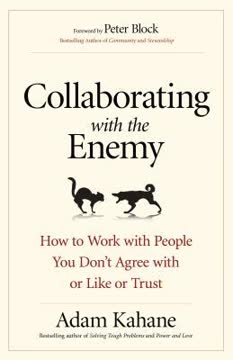
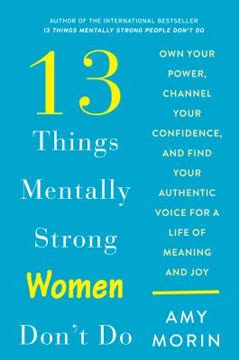
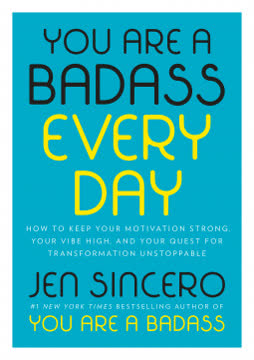
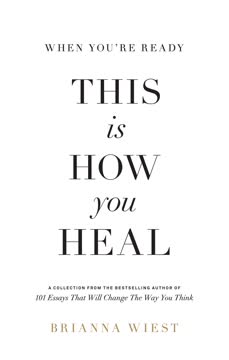
Download PDF
Download EPUB
.epub digital book format is ideal for reading ebooks on phones, tablets, and e-readers.
